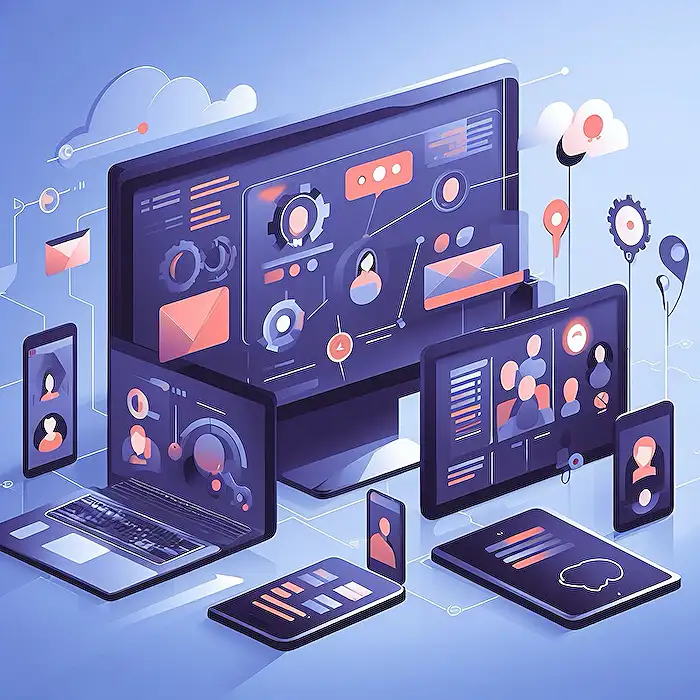Ctrl Shift - MCP & A2A - Why Business Leaders Should Care
Ctrl Shift explores MCP and A2A benefits for business leaders. Key themes: tech trends, business evolution. Products: PowerPoint
Key insights
- MCP (Model Context Protocol) is a standardized protocol that allows different AI agents and systems to communicate securely and efficiently. It creates a shared language for exchanging data and instructions between platforms.
- A2A (Agent-to-Agent) builds on MCP by enabling direct, real-time collaboration between AI agents without human involvement. This supports dynamic teamwork among specialized agents, increasing automation in business processes.
- Seamless Cross-Platform Workflows: MCP & A2A automate data exchange across multiple business tools, reducing manual steps and errors. This streamlines operations and improves productivity.
- Enhanced Security and Compliance: These protocols use strict access controls, ensuring AI agents only access authorized information. This helps businesses maintain strong security standards and meet regulatory requirements.
- Reduced Integration Complexity: MCP’s universal standard means companies can connect new tools quickly without custom integrations. Supporting MCP makes software compatible with any compliant agent, saving time and costs.
- Scalable Multi-Agent Collaboration: Businesses can deploy several specialized AI agents to work together on complex tasks—like contract analysis or CRM updates—boosting efficiency through focused automation and parallel processing.
Introduction to MCP & A2A: Why Business Leaders Should Pay Attention
In a recent episode of Ctrl Shift, John Savill's [MVP] explores how the Model Context Protocol (MCP) and Agent-to-Agent (A2A) technology are reshaping the enterprise AI landscape. These protocols are gaining attention for their ability to foster seamless interoperability, collaboration, and secure communication among artificial intelligence agents across diverse business systems.
As businesses increasingly rely on automation and AI-driven processes, the importance of standardized communication frameworks like MCP and A2A cannot be overstated. By enabling intelligent, automated workflows, these technologies promise to drive efficiency, reduce integration complexities, and enhance operational agility—factors that can directly impact a company’s strategic success.
Understanding MCP & A2A Technology
First, it is essential to define what MCP and A2A entail. MCP acts as a universal, open standard protocol that standardizes how AI agents and systems communicate. This shared “language” allows agents on different platforms to reliably request, share, and act on data.
Meanwhile, A2A builds upon MCP by enabling direct, dynamic negotiation and collaboration between AI agents. This allows them to coordinate tasks in real time, much like members of a human team, but without the need for constant oversight. As a result, businesses can develop ecosystems where specialized agents autonomously discover, communicate, and cooperate to complete complex business processes.
Business Advantages: Efficiency, Security, and Innovation
The adoption of MCP and A2A brings several notable advantages. To begin with, they enable seamless cross-platform workflows. By allowing AI agents to automatically fetch, analyze, and input data across multiple platforms, businesses can transform multi-step processes into instant actions. This not only reduces human error but also increases overall productivity.
Security and compliance are also enhanced through these open standards. Permission-aware access controls ensure agents only interact with authorized data, which reduces the risk of data breaches and supports regulatory compliance efforts. Moreover, MCP’s standardization minimizes the need for custom connectors, lowering development costs and accelerating deployment. This fosters innovation by encouraging developers to create “agent-ready” services, thereby expanding the AI capabilities available to enterprise users.
Real-World Applications and Tradeoffs
MCP and A2A are already finding practical business applications. For instance, in sales and marketing, AI agents can automatically synchronize data between Dynamics CRM, sales, and marketing platforms. They negotiate data flows and campaign adjustments to optimize performance in real time, reducing manual workloads and allowing teams to focus on strategy.
In media buying and planning, agents can collaborate across platforms such as Google Ads and Meta Ads, continuously researching and executing media buys. This cross-channel optimization leads to more efficient operations. However, while these examples highlight the potential for increased automation and productivity, they also pose challenges. Businesses must carefully balance the benefits of automation with the ongoing need for human oversight and clear governance structures.
Innovative Approaches and Ongoing Challenges
One of the key innovations in this approach is the emphasis on agent specialization and parallelism. Rather than relying on a single, general-purpose agent, MCP and A2A encourage the use of many highly specialized agents working together in parallel. This can improve reliability and speed but requires robust management to prevent conflicts or overlaps between agents’ tasks.
Furthermore, the open-standard interoperability offered by MCP is often compared to “USB-C for AI,” promising universal, plug-and-play integration. Centralized AI marketplaces such as Salesforce’s AgentExchange are making it easier for businesses to access and deploy new agents. However, as these ecosystems grow, companies must navigate the complexities of scaling and securing multi-agent environments, ensuring that their investments continue to deliver value without introducing new risks.
Conclusion: Strategic Implications for Business Leaders
Ultimately, as highlighted by John Savill, MCP and A2A protocols represent a significant shift in how businesses can leverage AI for greater efficiency and innovation. While these technologies offer compelling advantages, leaders must remain mindful of the tradeoffs involved—balancing automation with control, and openness with security.
By understanding and adopting these emerging standards, organizations can position themselves at the forefront of AI-driven transformation, ready to capitalize on new opportunities while managing the challenges that come with rapid technological change.

Keywords
Ctrl Shift business leaders importance MCP A2A digital transformation leadership strategy innovation
